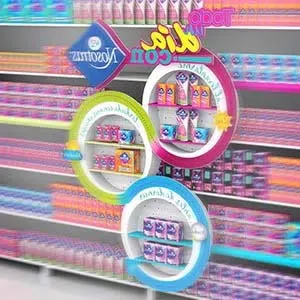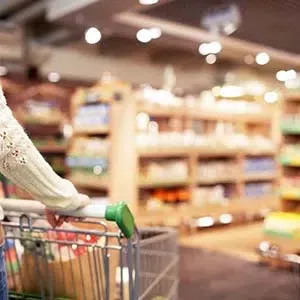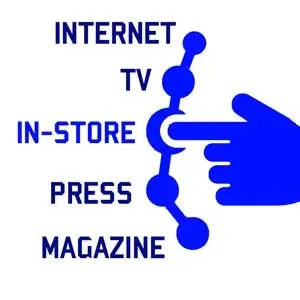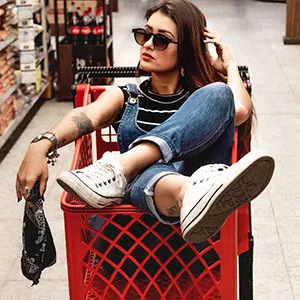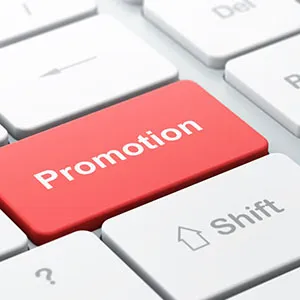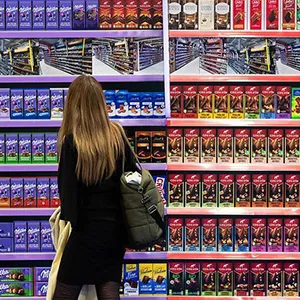POP or POS ? What is the difference ?
Why is it important for your retail visibility ?
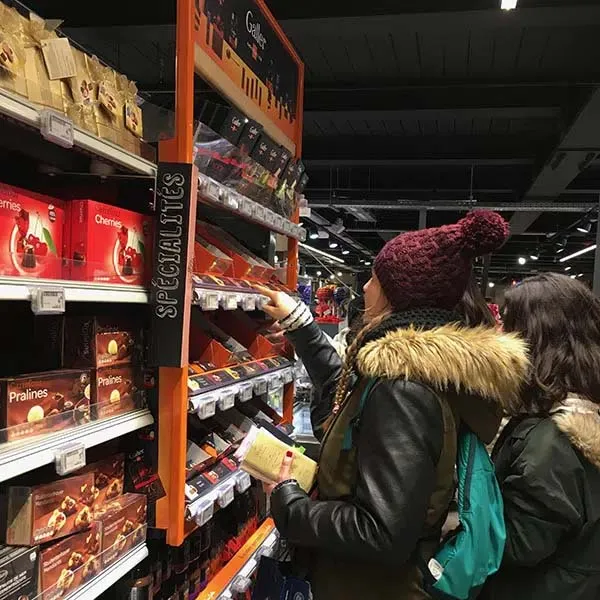 They
sound similar and we'll see they overlap – or flow into – each-other. That's why both abbreviations are
regularly used interchangeably.
They
sound similar and we'll see they overlap – or flow into – each-other. That's why both abbreviations are
regularly used interchangeably.
POP (point of purchase) refers to the physical location in the shop where the consumer decides to examine and consider buying a product. For example, in the confectionery department a client chooses a chocolate bar from the range on the shelves and she puts it in a shopping basket.
POS (point of sale) is the area in a store where the customer completes the last leg of the purchase. At the cash desk, also known as the check-out area, the supermarket completes the transaction, calculates the amount owed for the chocolate and indicates the options to make payment. Before the cashier thanks the client for the visit, his or her purchase is turned into a sale.
Pilotes specializes in the design of commercial furniture, displays, and merchandising solutions for retail and stores. We offer 100% customized point-of-purchase materials tailored to the in-store projects of brand and retail. Because we care about the climate and environment, we analyze the lifecycle of each project to avoid, reduce, and offset its impact 🌍🌿
Do you have a project planned? Contact us and let’s bring your vision to life together!
What significance does the difference have for instore communication strategies ?
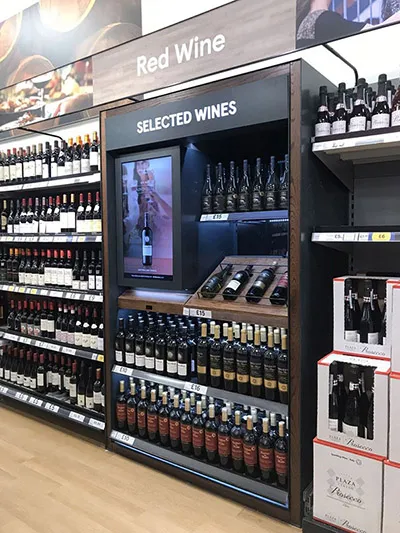
Product visibility and instore messaging strategies are carefully planned based on a clear understanding of who the target shopper is, shopping behaviour, and how (and where) she or he can best be influenced.
POP communication catches consumers who rush through the shop, navigating and searching the aisles for what they have in mind to satisfy their needs. POP communication on the shelves can call out the primary product placement for any item to get shoppers to take notice. There are many good solutions to improve the findability of a product on its home shelf. The best POP material, such as a shelf stopper or a shelf management material, succeeds in slowing down and ultimately stop the hurried shopper at the location of the product (and tempts her or him to buy it).
Related article > Stimulate retail sales with facingPOP communication can also create second product placement (dual location). A freestanding fixture, such as a display material, is placed at a strategic spot in a store, a subtle but extremely effective way to move merchandise. In this case, the POP area is the entire shop floor. You can find this fixture just about anywhere in a shop, preferably at the end of high-traffic aisles. Brands like to use a display material because it can increase the visibility and the space taken up by the product. Retail likes to use them because the most creative ones keep the sales space dynamic and exciting, and can break the shopper routine.
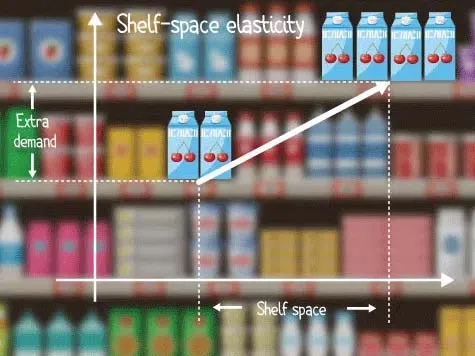 Among
a number of other benefits, the profitability of POP
material depends on the extent to which it keeps the customer alert, the extent to which a brand succeeds
in activating impulsive or latent needs and, above all, the response to extra visibility and space taken
up.
Among
a number of other benefits, the profitability of POP
material depends on the extent to which it keeps the customer alert, the extent to which a brand succeeds
in activating impulsive or latent needs and, above all, the response to extra visibility and space taken
up.
→ According to research shelf-space elasticity is on average .17 to .20. In others, if visibility on the shelf doubles demand will increase by average 17 to 20%, with stronger increase for impulse-sensitive items. The elasticity is stronger when increasing than decreasing shelf-space!
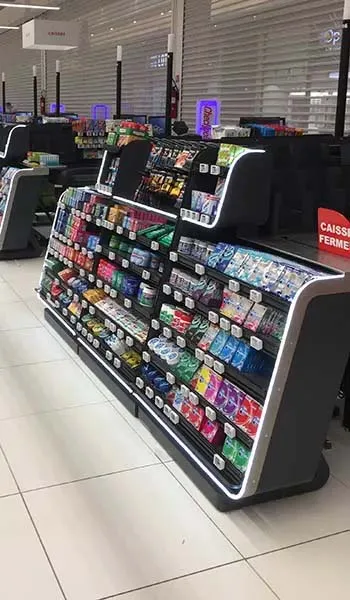
POS communication (POS!) aspires engagement with products in the area where purchases are processed, the final stage of the buying journey. While the average aisle penetration per trip in a grocery store is only 20% to 30%, the transactional area is the most visited of any shop.
In the last one-third of their shopping trip shoppers are more likely to shop for impulse and indulgent items (snacks, drink, magazine, cute gadget, etc.) Most of us don't enjoy shopping. We consider it a task-driven exercise. In the end we deserve a reward, right? It's no wonder that on the way to the checkout (or presented on a counter-top or checkout display unit) all kinds of smaller items are offered as impulse purchases. This offer is fast and direct ... eventual negative consequences of a careless purchase are not that dramatic.
Because it is always busy at the checkout, everything revolves around visibility and quick choice. That's a tricky challenge today with the homo distractus waiting at the checkout completely taken by the phone in his or her hands - alas for the industry that suffers from this behaviour.
Because we better remember the peak and the end of any experience (cfr. peak-end rule by Nobel Prize-winning economist Daniel Kahneman), retail pays a lot of attention to a hassle-free checkout scenario, also with regard to product range, presentation and image. This is the place where customers are most likely to receive their last impression of the store.
It is worth mentioning that POS also refers to various check-out technologies, such as scanning and payment systems.
In marketing and instore communication both POS and POP are used interchangeably, with a tendency towards POP.
Date: Sept. 2020 — bh
Are you interested in the advantages of instore communication ? Reach out today, we will gladly ideate for your product.
